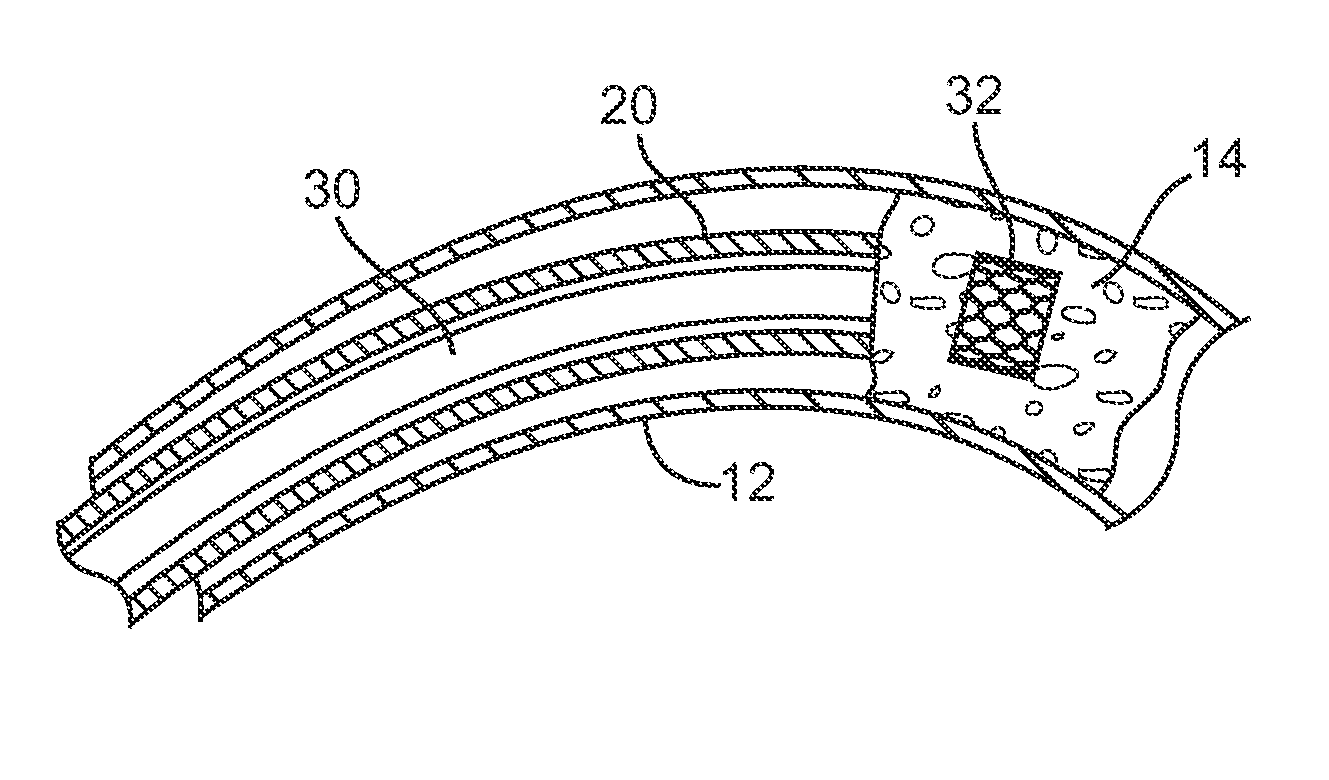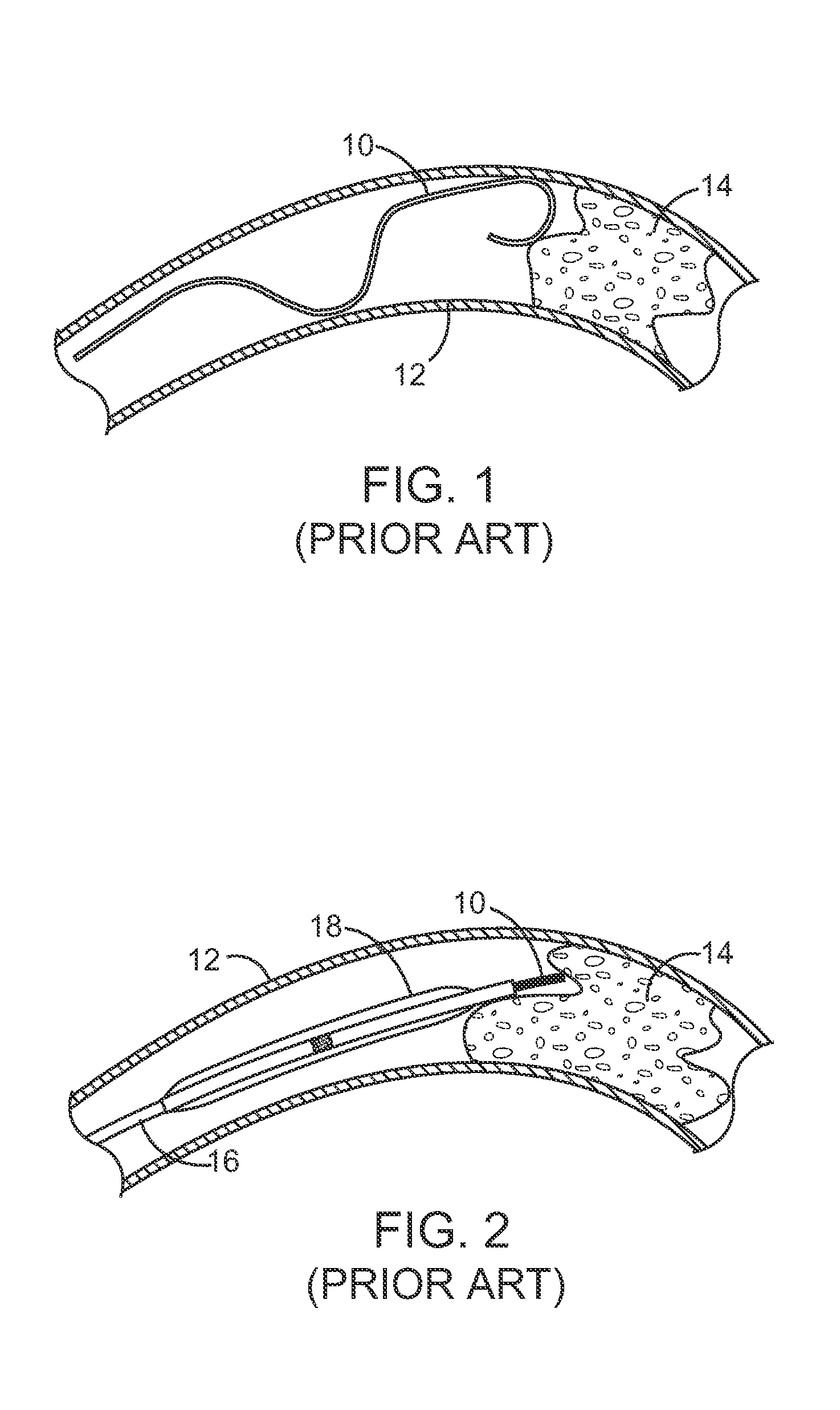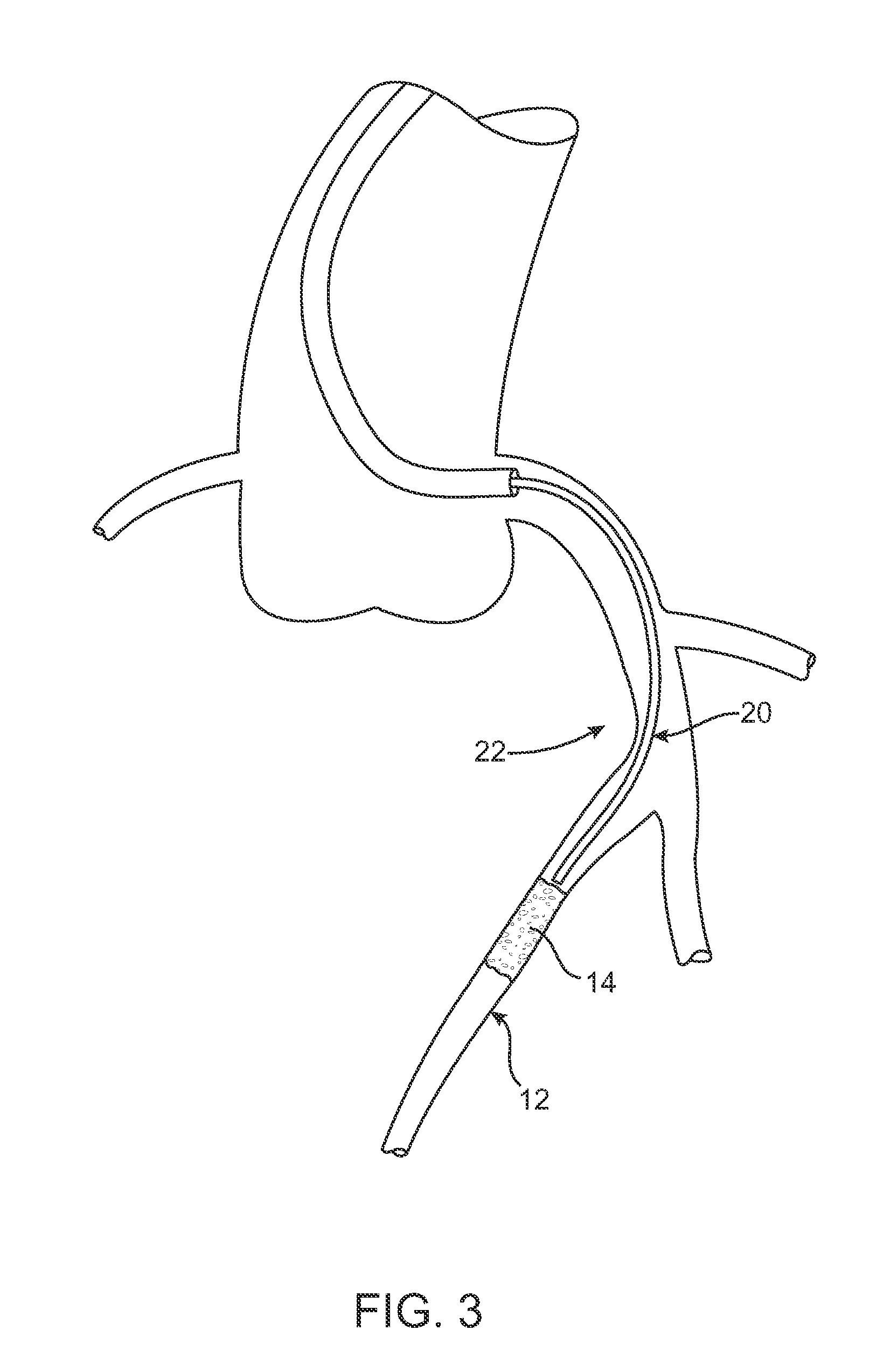Drug-Eluting Device for Treatment of Chronic Total Occlusions
a technology of occlusion and drugeluting device, which is applied in the direction of bandages, surgery, coatings, etc., can solve the problems of difficult penetration of the surface, the inability of the stiffer guidewire to cross the occlusion, and the inability to avoid perforation of the vessel wall,
- Summary
- Abstract
- Description
- Claims
- Application Information
AI Technical Summary
Problems solved by technology
Method used
Image
Examples
Embodiment Construction
[0021] Specific embodiments of the present invention are now described with reference to the figures, where like reference numbers indicate identical or functionally similar elements. The terms “distal” and “proximal” are used in the following description with respect to a position or direction relative to the treating clinician. “Distal” or “distally” are a position distant from or in a direction away from the clinician. “Proximal” and “proximally” are a position near or in a direction toward the clinician.
[0022] The present invention is directed to a drug-eluting device for treatment of chronic total occlusions. FIGS. 1 and 2 are cross-sectional views illustrating potential problems associated with the treatment of chronic total occlusions. Referring to FIG. 1, a standard or steerable guidewire 10 is advanced through a vessel 12 to the site of a chronic total occlusion 14. As depicted in FIG. 1, guide wire 10 may be unable to penetrate the proximal cap of occlusion 14 and may pro...
PUM
| Property | Measurement | Unit |
|---|---|---|
| Current | aaaaa | aaaaa |
| Time | aaaaa | aaaaa |
| Therapeutic | aaaaa | aaaaa |
Abstract
Description
Claims
Application Information
 Login to View More
Login to View More - R&D
- Intellectual Property
- Life Sciences
- Materials
- Tech Scout
- Unparalleled Data Quality
- Higher Quality Content
- 60% Fewer Hallucinations
Browse by: Latest US Patents, China's latest patents, Technical Efficacy Thesaurus, Application Domain, Technology Topic, Popular Technical Reports.
© 2025 PatSnap. All rights reserved.Legal|Privacy policy|Modern Slavery Act Transparency Statement|Sitemap|About US| Contact US: help@patsnap.com



